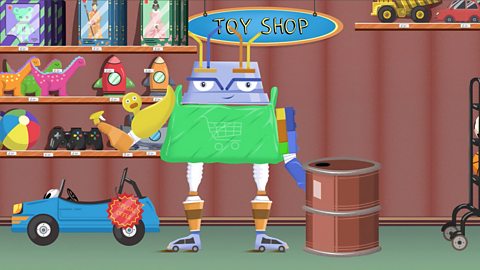What is sustainable living?
Sustainability means doing something that will cause little or no damage to the environment and will be able to continue for a long period of time.
In this article you can learn about:
- Why sustainability matters
- Examples of unsustainable things we do
- How we can make more sustainable choices in life
This resource is suitable for sustainability topics for primary school learners.
Video - How to live more sustainably
Learn about making sustainable choices in life in this video.
What is sustainability?
Well, it’s doing something in a way that can carry on going.
For example, using fossil fuels isn’t sustainable, because one day there won’t be any left.
And burning them is one of the main causes of global heating.
A lot of the things we buy aren’t sustainable either.
It takes lots of energy to make and transport them, and when they break, or we »ĺ´Ç˛Ô’t need them any more, we throw them away.
We can do lots of things to live more sustainably.
We can reduce the amount of things that we buy and only buy things that we actually need - like breakfast!
Sometimes we can re-use items instead of throwing them away.
Even if it’s only a small thing like saving the bag from inside the cereal box and reusing it as a sandwich wrapper!
And if we can’t reuse something, we should recycle it!
Old paper can be recycled into loo roll which saves lots of trees from being cut down.
Doing all these things can make a bit of a difference.
But what about the millions of products that get made every year?
All the stuff we need - like food, clothes, buildings and technology?
To live sustainably, can we find different ways to make all these things?
Well, how about replacing plastic with something sustainable like bamboo?
It grows easily and quickly, and it’s already used to make products like knives and forks, straws, toothbrushes… and even bikes!
Or instead of chucking away clothes and shoes that we »ĺ´Ç˛Ô’t want anymore, they can be used by people in other countries!
There are new solutions being invented all the time like furniture made from mushrooms, or food packaging made from seaweed!
And they’re all designed to be circular.
That doesn’t mean that sustainable products will actually be circles…
It means that once products have been made, they can be recycled, re-used or composted.
And that way, they’ll keep going and going and going and going and going…
What is sustainability and why does it matter?
Doing something sustainably means doing something in a way that can carry on going.
That’s very important right now because Earth is going through a period of climate change. Earth is heating up because of global heating and this is changing the weather, seasons and water levels. If we all change how we live we can limit how much these things change. We need to cut down on the unsustainable things we do, like:
- using energy that produces lots of carbon dioxide
- using materials that pollute and take a lot of energy to make
We have to live sustainably to fight against climate change and protect the Earth and all the living things on it.
Examples of unsustainable things we do:
Fossil fuels
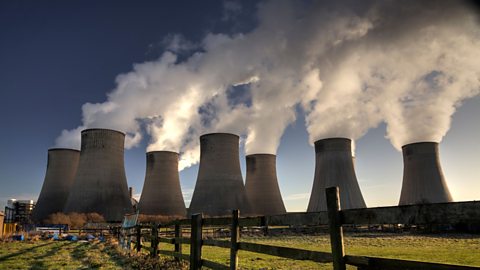
Using fossil fuels is unsustainable:
- They emit carbon dioxide and other greenhouse gases that cause climate change.
- They are non-renewable which means they can’t go on forever. If we keep using them to make energy, one day there won’t be any left.
- They pollute the air, water and land, damaging animals, plants and people's health.
Learn more about fossil fuels and what we use them for: Fossil fuels

Buying more than we need

Buying more than we need is unsustainable:
- Making anything uses natural resources which are non-renewable.
- Extracting natural resources (for example by farming or mining) can damage or pollute environments.
- Anything we buy uses energy to make and transport it.

How we buy and use things

How we buy and use things is often unsustainable too.
- Modern businesses transport food, toys, clothes and other products over long distances causing a lot of pollution and carbon emissions.
- When we are finished with things, we often »ĺ´Ç˛Ô’t recycle them. This damages the environment and will cause us to run out of these materials one day.

How we can make more sustainable choices
We can all make a difference in the fight against climate change and to protect our planet. Using the rule reduce, re-use, recycle can help us to live sustainably in order to protect the planet and the life on it.
Reduce

Reduce the amount of:
- things we buy
- energy we use
- food, water and energy we waste
- things we buy which have been transported over long distances
We should especially reduce the amount of plastic we use as it harms our environment when it is made and when it is thrown away.
Here are some ideas for reducing your food waste: Food waste

Re-use

Re-use items we have instead of throwing them away. For example, we can re-use:
- leftover food - if too much has been made for dinner it could be re-used for lunch or a snack
- glass jars and water bottles - they can store all sorts of things
- old clothes and old furniture - you can use them for a bit longer, repair them or make new things out of them (this is also known as 'up-cycling')
- good quality clothes, toys, books or other products that you have grown out of can be donated to charity so that other people could re-use them.
This means we are buying fewer new materials, reducing our contribution to carbon dioxide emissions.

Recycle
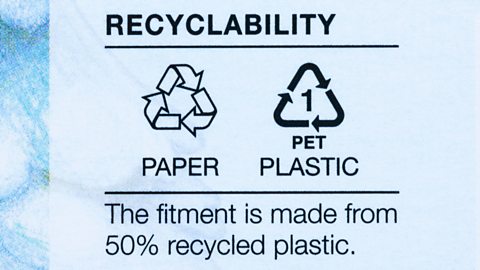
Recycle the items we have instead of throwing them away.
Most items we buy are not biodegradable - the materials they are made from won’t break down naturally. This leads to big landfill dumps, lots of litter and unclean spaces.
If we recycle, not only do we keep our local environment tidier, we also help the global environment because recycling materials uses much less energy than making new materials.
Becoming familiar with where and how you can recycle things is really important. Most things can be recycled and have a symbol on it to tell you if it can be recycled.

Companies and sustainability
Finally, while we all make a little difference individually, we can also try and make big companies make big differences.
Many big companies produce much more carbon emissions than we do individually, so we can make sure these companies are doing their best to protect the planet as well.
Some companies try harder than others to prevent pollution, use sustainable materials and energy, reduce transport and packaging, prevent waste.
We can choose which companies you buy things from by checking whether they are friendly to the environment or not.
More of these choices will be in your control as you get older.
If big companies who are damaging the environment lose customers and money because they aren't behaving sustainably, then we might see them change their behaviour and treat our planet more respectfully.
If we start to support companies that act more sustainably, then that can encourage other companies to do so too.

Advantages and disadvantages of sustainable living
Advantages
There are so many advantages to living a sustainable life and being aware of the impact our actions have on the environment.
- We lessen the impact on the natural environment. A reduction in harmful carbon emissions can help us tackle climate change and the damage it causes.
- It helps to ensure a bright future for future generations. This is very important as the decisions we make now will have a greater impact on our children and grandchildren.
- By using sources of renewable energy we can create new and exciting jobs.
- By reducing the amount we waste, we can save money.
Disadvantages
There are no real disadvantages to living sustainably because the advantages seriously outweigh any downsides. It can:
- Cost slightly more to buy sustainable clothing or goods (but remember, overall if we are reducing the amount we buy, we will also save money in the future)
- Take a little more time to figure out where to recycle everything properly and where to buy things from if you want to support companies who are environmentally-friendly.
- Be hard to decide how to be sustainable (but remember that anything you do more sustainably can help. Try doing one new thing at a time until you get used to it…then add another, and another.)
Remember! The disadvantages of living sustainably are seriously outweighed by the benefit of limiting climate change and protecting our world.

Key words about sustainable living
Sorry, something went wrongCheck your connection, refresh the page and try again. - Doing something that will cause little or no damage to the environment and will be able to continue for a long period of time.
Sorry, something went wrongCheck your connection, refresh the page and try again. - A gas, in its most common form, that is found in the Earth’s atmosphere. It is a greenhouse gas that can be harmful to the environment as it contributes towards global heating.
Sorry, something went wrongCheck your connection, refresh the page and try again. - Coal, oil and gas are the three fossil fuels – these are our non-renewable energy sources. They are called fossil fuels because they are made from old, dead animals and plants. These animals and plants are compressed underground over millions of years and they eventually turn into fossil fuels.
Sorry, something went wrongCheck your connection, refresh the page and try again. - Natural resources that cannot be replaced after they are used are non-renewable. This means that they exist in a fixed amount on Earth. Fossil fuels such as coal, oil and gas are all non-renewable resources.
Sorry, something went wrongCheck your connection, refresh the page and try again. - A shortage of water that can impact people and the environment. These occur when there is a lack of rainfall over an extended period of time, usually a season or more.
Sorry, something went wrongCheck your connection, refresh the page and try again. - The ability of a material to breakdown and disappear over time. Some materials are dissolved by bacteria or other biological elements. If a material is biodegradable, it means that it can be consumed by microorganisms. It is an important process in ecology and waste management.
Sorry, something went wrongCheck your connection, refresh the page and try again. - The release of carbon into the earth’s atmosphere which contributes to climate change.
Test your knowledge
Quiz
Challenge

Make a poster to convince others to live more sustainably
Include the following information:
- What sustainability means
- Why it is important to live sustainably for the environment
- How we can live sustainably
- Images, titles and well-organised sections and section titles
Learn some top tips for creating your own poster: How to make a poster
Remember! Sustainability means doing something in a way that can carry on going – so we need to live in a way that is kind to Earth and can continue without harming the planet or the humans, plants and animals that live here.
More on Sustainability
Find out more by working through a topic
- count4 of 28
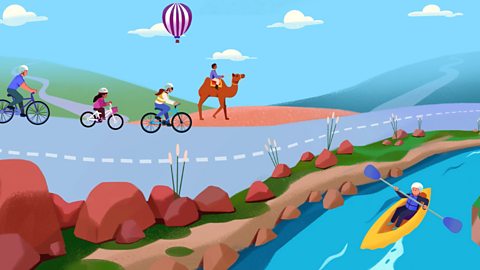
- count5 of 28

- count6 of 28
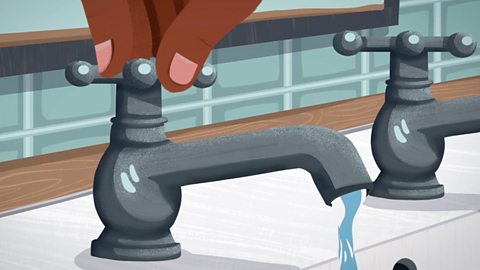
- count7 of 28
